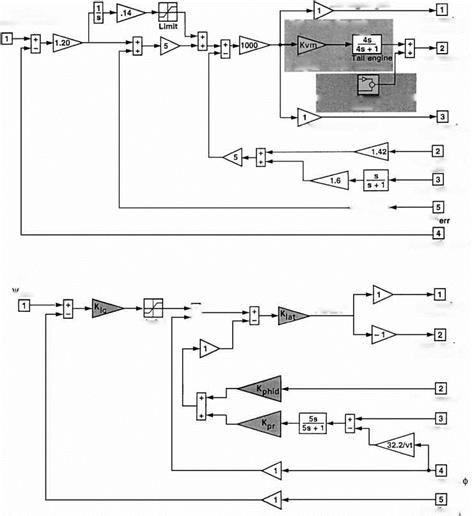Propulsion-Controlled Aircraft
Multiengine airplanes that rely on hydraulically powered controls can be controlled in an emergency by differential applications of thrust. This is for the emergency situation in which all control surfaces are either fixed or freely floating, but are no longer under the control of the flight crew. NASA calls airplanes controlled by differential operation of thrust propulsion-controlled aircraft, or PCA.
While differential thrust might in principle provide sufficient control moments to guide an airplane to a safe emergency landing, it should be clear that lags in engine thrust response to throttle movements would make successful control an almost impossible task. The emergency noted in Sec. 5.23, “Safety Issues in Fly-by-Wire Control Systems,” where a Lockheed L-1011 with a jammed elevator was controlled with differential thrust by a highly skilled pilot, did not involve full loss of flight control operation. A rather less successful outcome of differential thrust control occurred with a DC-10 that had lost all flight control operation (Tucker, 1999).
The difficulty of throttle-only control for emergency control of airplanes with failed control systems led NASA to authorize a research program for propulsion-controlled aircraft
that would lead to workable systems. The key concept was the use of stability-augmentation techniques that would overcome the thrust lag problem, without requiring unusual pilot skills. The research was authorized by the then director of NASA’s Dryden Flight Research Center, Kenneth J. Szalai, and took place starting in 1990 (Burken and Burcham, 1997).
 The NASA PCA program was carried far enough to prove in flight testing that in the absence of surface hardovers or large mistrim conditions, a three-engine commercial jet, the MD-11, could be returned to an airport and landed without the aid of aerodynamic surfaces. The tail engine was used in the tests, although the PCA system is designed primarily for airplanes with two wing engines. The MD-11 engines were modified for PCA operation with full-authority digital controls and special idle settings to avoid large time lags in response to thrust change commands. The longitudinal and lateral PCA control laws are illustrated in Figure 20.7. In conclusion, the NASA PCA effort has provided a viable option, with
The NASA PCA program was carried far enough to prove in flight testing that in the absence of surface hardovers or large mistrim conditions, a three-engine commercial jet, the MD-11, could be returned to an airport and landed without the aid of aerodynamic surfaces. The tail engine was used in the tests, although the PCA system is designed primarily for airplanes with two wing engines. The MD-11 engines were modified for PCA operation with full-authority digital controls and special idle settings to avoid large time lags in response to thrust change commands. The longitudinal and lateral PCA control laws are illustrated in Figure 20.7. In conclusion, the NASA PCA effort has provided a viable option, with
Left engine gain
moderate hardware and software costs, for transport designers to consider in the quest for safety.











